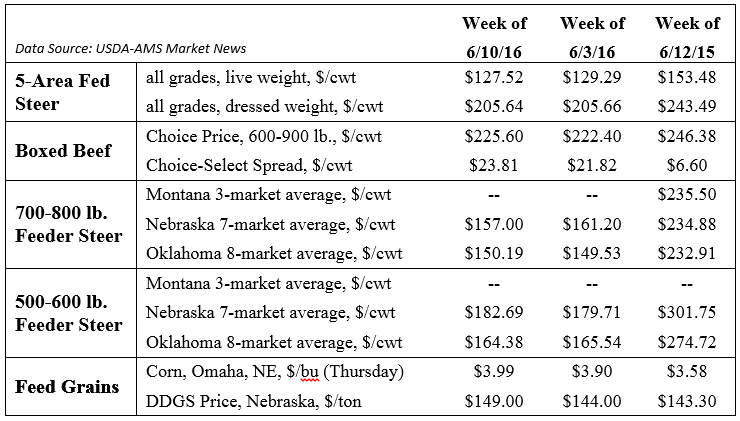In the Cattle Markets: Choice Select Spread Hits Record
By: David P. Anderson, Texas A&M AgriLife Extension Service
The Choice-Select spread hit a record high weekly average of $23.81 per cwt. The week included a record high day on June 8th of $24.55. This record reflects the cutout values for 600-900 pound carcasses and the data begins in January 1999. Choice-Select spreads exceeded $20 per cwt at this time of the year in both 2004 and 2006. Prior to 1999 cutout values were reported for light and heavy Choice and Select carcasses with weight breakdowns of 550-700 pound and 700-850 pound. From 1999 through 2004 the weights were reported for 600-750 pound and 750-900 pound carcasses. The carcass cutout weights reflect changes in dressed weights over time.
The strength of the Choice-Select spread is due largely to demand side issues. There appears to be more buying for retail sales of Choice beef cuts rather than Select. More grocery stores and restaurants are stocking Choice beef. There is a supply effect at work too. The percent of beef grading Choice in April hit a record high (for April) of 73.4 percent. In May, the weekly percent grading Choice has fallen to, or below, year ago levels. Total supplies of beef, both Choice and Select, are higher than a year ago, but the percent grading Choice has not increased.
Feed prices, corn and soybean meal, have surged over the last few weeks. Cash corn prices at Omaha are up $0.52 per bushel since the first week of May. Soybean meal prices are up a whopping $77 per ton, or over 20 percent, over the same time period. Worries about poor weather causing a smaller crop in South America kicked off the run. The last two weeks have brought concerns about rain shortfalls and hot weather in the Midwest. “Weather markets” are fairly common in the summer as heat and rainfall concerns get incorporated in markets. USDA also revised upward their expectations for U.S. corn and soybean exports. Higher feed costs should pressure feeder cattle prices lower, as will seasonally lower fed cattle prices this summer.
The Markets
While fed cattle drifted a little lower last week, the Choice beef cutout increased over $3 per cwt to $225.60. While the Choice price is a little over $20 per cwt lower than last year, the Choice-Select Spread is over $17 above last year. Feeder cattle prices were a mixed bag, with heavier Nebraska cattle declining in price while Oklahoma cattle of the same weight increasing slightly. Lighter weight feeders were reversed with Nebraska steers increasing while Oklahoma steers brought lower prices, on average. Feed prices also increased with both corn and DDGSs higher for the week.







